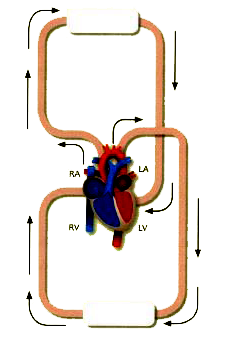Give a schematic diagram showing reduction of a molecule of nitrogen and formation of ammonia.
Step-by-Step Text Solution
1. Identify the Enzyme: The process of converting atmospheric nitrogen (N₂) into ammonia (NH₃) is facilitated by the enzyme nitrogenase. This enzyme is found in nitrogen-fixing bacteria.
2. Draw the Enzyme: Begin by drawing the nitrogenase enzyme. Label it clearly as "Nitrogenase".
3. Introduce the Substrate: The substrate for this reaction is nitrogen gas (N₂). Draw the nitrogen gas molecule and indicate that it will bind to the nitrogenase enzyme.
4. Formation of Enzyme-Substrate Complex: Illustrate the binding of nitrogen gas to the nitrogenase enzyme, forming an enzyme-substrate complex. This can be represented as the nitrogen gas molecule attached to the nitrogenase enzyme.
5. Reduction Process: The next step involves the reduction of nitrogen. Indicate that hydrogen ions (H⁺) will be added to the nitrogen molecule.
6. Add Hydrogen Ions: Show the addition of two hydrogen ions to the nitrogen gas molecule. This will be the first reduction step. Repeat this process for a total of two reduction steps, resulting in the addition of four hydrogen ions in total.
7. Formation of Ammonia: After the reduction, the nitrogen will combine with the hydrogen ions to form ammonia (NH₃). Draw two ammonia molecules being released from the enzyme.
8. Release of Enzyme: Finally, indicate that the nitrogenase enzyme is now free to bind with another nitrogen molecule, completing the cycle.
9. Final Diagram: Your schematic diagram should now include the nitrogenase enzyme, the nitrogen gas substrate, the enzyme-substrate complex, the hydrogen ions, the ammonia products, and the release of the enzyme.
Topper's Solved these Questions
- BOOK - ICSECHAPTER - MINERAL NUTRITION EXERCISE - TEST YOUR PROGRESS (OBJECTIVE TYPE QUESTIONS)42videos
MINERAL NUTRITION
- BOOK - ICSECHAPTER - MINERAL NUTRITION EXERCISE - TEST YOUR PROGRESS (Fill in the blanks with appropriate words )27videos
MINERAL NUTRITION
- BOOK - ICSECHAPTER - MINERAL NUTRITION EXERCISE - REVIEW QUESTIONS (SHORT ANSWER TYPE QUESTIONS)13videos
MINERAL NUTRITION
- BOOK - ICSECHAPTER - LOCOMOTIONA ND MOVEMENT EXERCISE - NCERT EXERCISES WITH ANSWER (DIFFERENTIATE BETWEEN)8videos
LOCOMOTIONA ND MOVEMENT
- BOOK - ICSECHAPTER - MORPHOLOGY AND ANATOMY OF DIFFERENT SYSTEM OF COCKROACH EXERCISE - Long Answer type Questions6videos
MORPHOLOGY AND ANATOMY OF DIFFERENT SYSTEM OF COCKROACH
Similar Questions
Knowledge Check
- Question 1 - Select One
Which of the following factors would favour the formation of ammonia?
AHigh pressureBLow temperatureCHigh volumeDLow pressure - Question 2 - Select One
During N2 fixation, reduction of one molecule of nitrogen into 2 molecules of NH3 consumes _____molecules of ATP.
A4B16C56D38
By drawing an electron dot diagram, show the lone pair effect leading to the formation of ammonium ion from ammonia gas and hydrogen ion.
View SolutionDraw a schematic diagram to show the components of a reflex arc. Use arrows to indicate the flow of impulse.
View SolutionDraw a simple ray diagram showing the formation of a primary rainbow.
View SolutionIndustrially, ammonia is obtained by direct combination between nitrogen and hydrogen.
Is the formation of ammonia promoted by the use of high pressure or low pressure?View SolutionDraw diagrams to show the formation of beats?
View SolutionGive schematic arrow diagram giving parts of plant showing movement of water from soil till xylem of the plant root cortex, root hair, soil, xylem, endodermis.
View Solution


